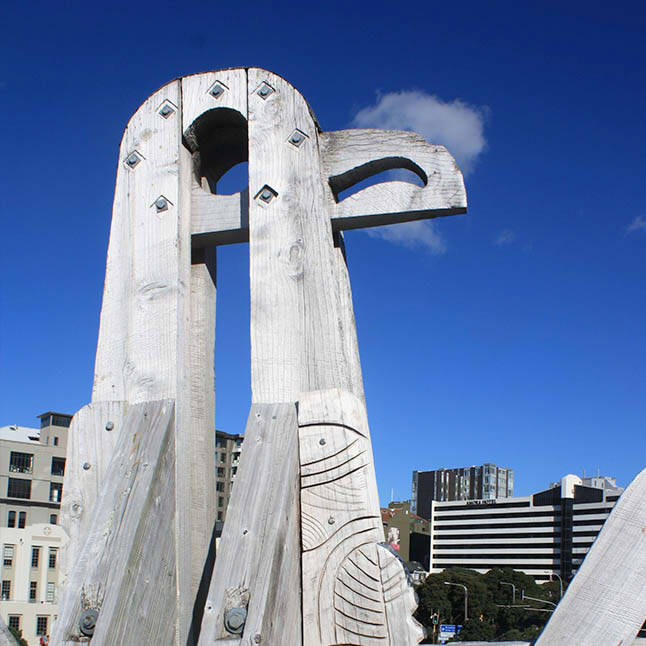The collaborative work City to Sea Bridge opened in 1994. It connects the heart of the city to Frank Kitts lagoon and the waterfront, stretching over Jervois Quay, a multi-laned road that separates the city from the waterfront.
The bridge is constructed of timber planking and is adorned with non-traditional wooden sculptures carved by prominent Māori artist Paratene Matchitt, some of which form the sides of the bridge. One side of bridge there are two taniwha called Ngake and Whātaitai. On the other side are two manu (birds). Other sculptures are whales, patiki (founder), and fish.
Some sculptures are on metal poles, including a star and the phases of the moon, which were inspired by a flag used by Te Kooti (a Māori military leader and prophet). These sculptures are best viewed on clear evenings with the full moon rising behind them. The City to Sea Bridge and its neighbour, Te Aho a Māui together explore the Māori creation story of Te Whanganui-a-Tara (Wellington Harbour) and of Te Aho a Māui (Māui's fishing line), which he used to fish up the North Island of New Zealand.
The bridge provides 'a physical and conceptual space through which the different cultural uses and meanings invested in Te Whanganui-a-Tara or Wellington Harbour are played out... [and] signals the increasing prominence granted to Māori culture within the realm of public art' (Harper and Lister, 2007, pp. 16-18).

